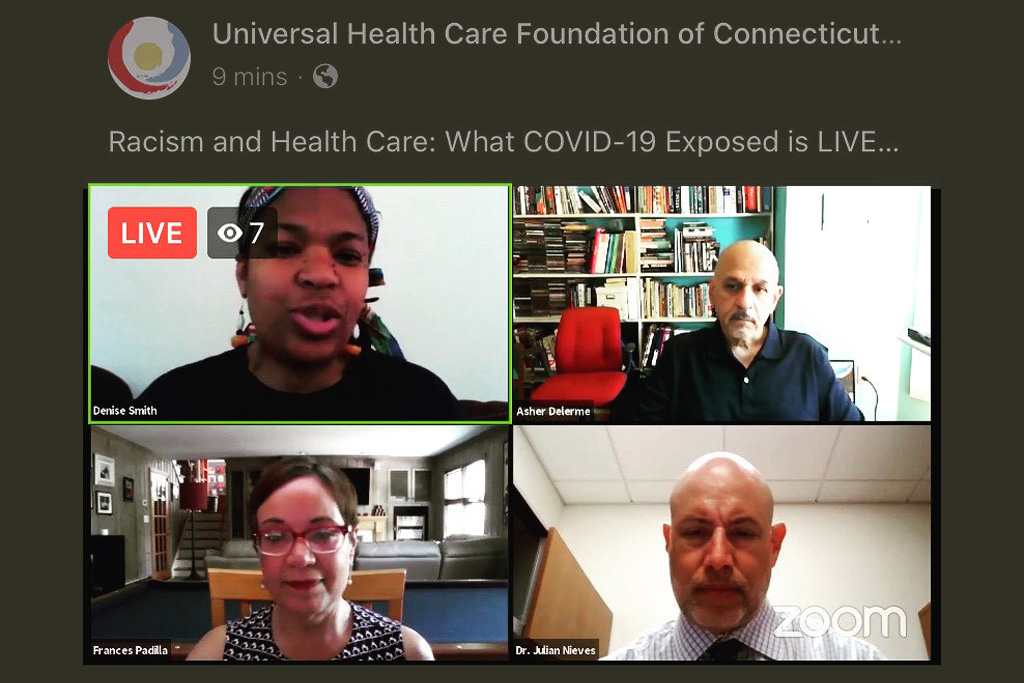Separating Real Health News from Clickbait
September 24, 2019
Michelle Spoto is pursuing both DMD and PhD degrees at University of Connecticut. Her goal is to work as a clinician and researcher at an academic dental institution. She joined Donaghue’s Policy Advisory Committee in 2017.

Photo by Trust "Tru" Katsande on Unsplash.
As researchers, we tend to communicate the results of our studies to other academics or industry professionals though academic publications or presentations. In general, we’re proficient at succinctly summarizing our results for a knowledgeable audience and answering exacting questions about study generalizability, limitations, and methodology. We live comfortably in the nuance of confounding variables, methodological complexity, and replicate experiments and we understand that even from the most rigorously designed study can we usually draw only modest conclusions.
But, popular media is driven by attention-grabbing click-bait with, in the best of cases, little regard for this nuance and, in the worst of cases, little regard for much accuracy at all. The accurate translation of complex biomedical research studies to lay language is, of course, exceedingly difficult even for the most well-intentioned journalists. As study conclusions are simplified into easy-to-digest soundbites or one sentence headlines, layers of nuance – the things that as researchers we’re so acutely aware of – get stripped away. So, as researchers, what simple advice can we give our friends and family to help them navigate the dizzying world of health and wellness news?
1) Consider the source
With an ethical responsibility to factual reporting, reputable news organizations serve as gatekeepers in today’s era of alternative facts and advertisements disguised as online new articles. To always consider the source of the news story is the most basic technique to keep away from inaccurate reporting. But, reputable news organizations – that are, in many cases, still beholden to clicks and likes – have the challenge of simplifying complex scientific reporting and often unintentionally lose nuance, and thus lose accuracy, along the way. For this reason, looking at the article publisher – although an important first step – is never enough. As a next step, readers should always…
2) Consider the study itself
As researchers, we’re happy to dive directly into an academic publication to closely scrutinize methodology and compare study conclusions to actual study results. While this type of deep-dive isn’t practical for lay people, readers can often glean lots of information from the news article itself. Reputable reporting often includes a small summary of details about the study:
- Was it conducted in humans or animals?
- Is it on-going or complete?
- What’s the sample size?
Asking these questions can help a reader determine how much stock to take in study results. Even if a reader doesn’t know exactly how a study in a mouse, for example, would apply to humans, she’s likely to understand that conclusions drawn from an animal model of a disease may not be directly applicable to humans and to take the study with a grain of salt. Similarly, she’s likely to take greater stock in the results of a multi-year study with five thousand study subjects versus a pilot study of ten or fifteen subjects. Still, there’s only so much detail that a news organization will report and the reader may not know how to draw her own conclusions based on the limited data. In that case, readers should…
3) Look for Expert Consensus
Very rarely do the results of one study sway expert medical consensus, which instead relies on all available research and clinical expertise. While these medical guidelines may be difficult to find or interpret for non-healthcare professionals, most medical professional organizations (e.g. The American Heart Association, The American Dental Association) provide patient resources on their websites. This is information written in lay language for patients wanting a reliable source of health information. If a reader wants to know more about a health topic she heard about online, looking at these resources is a great way to learn about the expert consensus on a topic without having to interpret complex medical terminology.
Back Issues

Developing a Research Agenda on High-Value, Equitable Care: The Power of Being Practical, Inclusive, and Innovative

The Room Where Research Happens: How I Became Part of a Group that Was Open to Research the Topic that Few Seemed Willing to Discuss












